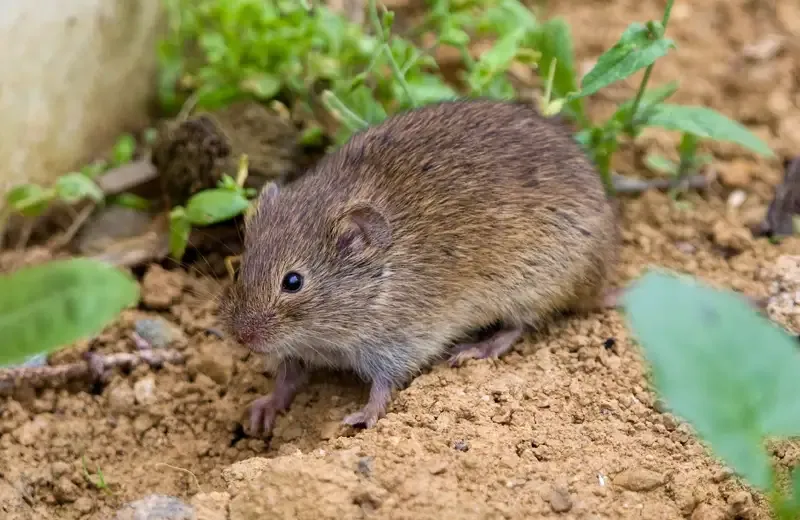Proven Vole Control Approaches to Secure Your Property
Proven Vole Control Approaches to Secure Your Property
Blog Article
Comprehensive Overview to Effective Vole Insect Control: Problem Identification and Therapy Techniques
In the realm of efficient pest control, vole problems position an unique difficulty that demands a critical method. These tiny rodents, frequently incorrect for mice, can ruin gardens, grass, and plants if left unattended. Determining the signs of vole presence and executing targeted treatment approaches are important parts of a successful insect management strategy. By discovering the subtleties of vole actions, comprehending key indications of infestation, and assessing a series of control options, one can establish an extensive technique to combat these evasive pests.
Understanding Vole Actions
Vole habits is defined by their tunneling practices and rapid recreation prices, making them a difficult parasite to regulate effectively. Their rapid reproductive rate further complicates control efforts, with ladies qualified of creating several litters in a single year, each containing several spawn.
Voles are most energetic throughout the morning and night hours, spending the majority of their time foraging for food. Their delving habits not just disturb grass and gardens however additionally make them challenging to remove and discover. Comprehending vole actions is vital for effective bug control strategies. By determining their burrow areas, checking feeding areas, and carrying out targeted control techniques, such as capturing or environment modification, vole invasions can be taken care of efficiently.
Indications of Vole Invasion
Prevention Methods
Implementing efficient avoidance strategies is vital in minimizing vole problems and guarding plants from their devastating feeding habits (vole yard damage). To prevent vole infestations, it is vital to begin by removing potential food sources and shelter. Keep lawn and plants cut short, remove weeds and debris, and keep a tidy yard or grass to make the location much less appealing to voles. Mounting barriers such as equipment towel or underground fence can additionally help deter voles from entering specific locations. Additionally, reducing excess wetness by dealing with dripping pipelines and making certain proper water drainage can make the setting much less welcoming for voles.
Consistently examining the property for indications of vole task, such as runways and burrow openings, is vital for very early detection and prompt activity. If vole task is suspected, think about utilizing traps or repellents tactically positioned near their paths.
Non-Lethal Control Techniques
To efficiently handle vole populaces while focusing on humane techniques, non-lethal control strategies offer useful options for lowering vole damages in landscapes and yards. One reliable approach is making use of physical obstacles such as equipment towel or cord mesh to protect vulnerable plants. These barriers can be buried at least 12 inches vole control utah deep and bent at a 90-degree angle to avoid voles from tunneling below. In addition, habitat adjustment can discourage voles by decreasing their preferred food resources and hiding spots. Maintaining a well-mowed grass, getting rid of particles, and keeping greenery cut can make the setting much less attractive to voles.

Lethal Control Options
One efficient method for attending to vole problems in yards and landscapes entails the calculated usage of dangerous control options. When encountered with a serious vole invasion that non-lethal methods have actually stopped working to contain, implementing dangerous control steps becomes critical. Generally, when utilizing dangerous control choices, it is important to do so responsibly and in conformity with local regulations to successfully handle vole infestations.
Conclusion
In conclusion, reliable vole bug control needs a comprehensive understanding of vole actions, recognition of indications of infestation, implementation of avoidance approaches, and application of both non-lethal and deadly control techniques. By integrating these methods, individuals can properly take care of vole populaces and shield their building from damage. It is essential to address vole infestations quickly to avoid additional problems and reduce the impact on the surrounding setting.
Offered the complex tunnel systems and quick recreation rates characteristic of voles, acknowledging the indications of vole invasion becomes important in reliable pest control. One of the primary signs of vole existence is the visibility of surface area paths or trails in lawn or snow, commonly about 1-2 inches broad, produced as voles take a trip in between their burrows and food resources.To properly manage vole populations while prioritizing humane techniques, non-lethal control approaches supply useful options for minimizing vole damages in landscapes and gardens.One efficient technique for addressing vole problems in yards and landscapes entails the critical usage of dangerous control alternatives. vole pest control.In conclusion, effective vole insect control requires an extensive understanding of vole behavior, identification of signs of infestation, application of prevention methods, and use of both non-lethal and deadly control approaches
Report this page